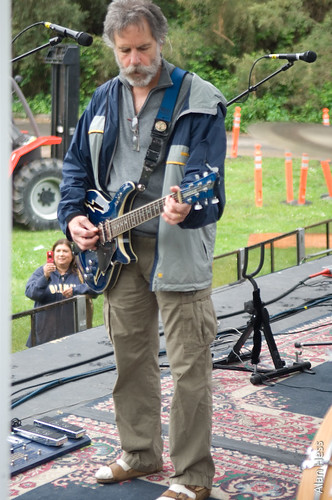Top 5 Grateful Dead Songs You Should Know, but Probably Don't.
Check it out at
http://dantheman70.livejournal.com/453782.html
The Sixties Aren't Dead
By Patricia Sullivan | June 3, 2008; 4:52 PM ET |
http://blog.washingtonpost.com/postmortem/2008/06/the_sixties_arent_dead.html
Who would have figured that both Bo Diddley and Alton Kelley, the guy who helped start the whole hippie scene in San Francisco would have died within days of each other? Kelley, who drew iconic posters for rock and roll concerts in San Francisco, even drew a few for Diddley's performances.
Everyone knows Bo Diddley because his influence on rock and rhythm and blues was so great, and he kept performing to the end of this life. Fewer knew the names behind the wild posters that sprung up, fully formed, from the streets, alleys and parks of the city where Flower Power blossomed.
The mid-1960s were one of those moments, a turn in the keyhole of history, when one generation loses its grip on the popular culture and another takes over. The Beats, who had a significant outpost in San Francisco's North Beach neighborhood, were over and something new was bubbling up. Rock historian Paul Grushkin told me:
"Imagine yourself there in San Francisco in 1965. It's a beautiful day, light bouncing off the bay, and you've got this fifth sense that something's about to happen. You just can't wait to put on a dance to showcase it.... Once he met Stanley Mouse, they'd go to the San Francisco public library and find art books. They would laugh and laugh and librarians would shush them up."
In those books, the long-haired, drug-experimenting, beaded guys found a way to publicize their dance concerts, and almost unknowingly to connect their art to the great tradition of previous artists.
"The last time there was any really posters done that had any value done were the posters done for World War II. "Loose Lips Sink Ships." But that was good stuff. At least it was graphically there," he told the San Francisco Chronicle a few years ago. "I saw one that showed a P-38 fighter plane and down below you could see a Japanese city burning and bullets were flying and it says "Payoff for Pearl Harbor" with a big Cadillac emblem. There was some pretty wild stuff during that period. Then it went Madison Avenue and the man in the gray flannel suit where it just got kinda bleak."
So when they started bending and twisting type and distorting images, they knew that artists had taken risks before.
"Toulouse Lautrec in his day was doing pretty much the same thing," agreed Grushkin. The Frenchman drew daring, provocative posters of sem-nudes and dance-hall girls; Kelley and Mouse's work thrust viewers headfirst into the sex-drugs-rock-and-roll world, forcing viewers to look through the lens of someone on a drug-induced high. Fans spent hours examining the posters for messages and jokes; if you couldn't read the poster, you shouldn't show up at the concert, went the saying.
By Patricia Sullivan | June 3, 2008; 4:52 PM ET |
1 month ago






